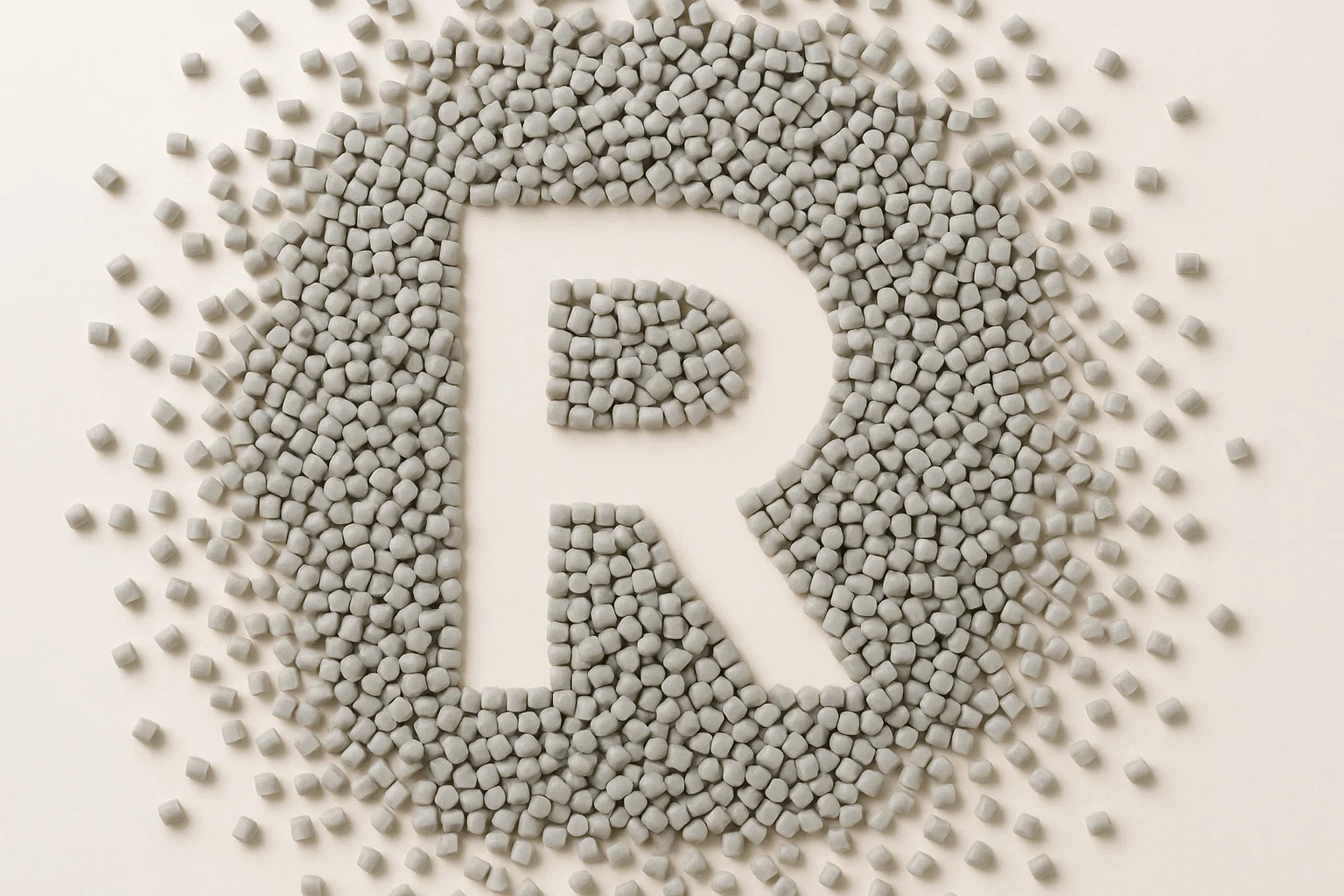Imagine a tiny, uniform bead that holds the power to become a car part, a piece of clothing, or a new, durable container. This is the promise of recycled plastic pellets. As industries worldwide pivot toward sustainability, these small granules are emerging as unsung heroes, providing the essential raw material to fuel a truly circular economy.
Derived from post-consumer and post-industrial plastic waste, recycled plastic pellets are transforming manufacturing. Let’s explore what they are, how they are used, and why they represent a smarter, more sustainable future for production.
What Exactly Are Recycled Plastic Pellets?
Recycled plastic pellets, also known as granules or nurdles, are small, pelletized forms of plastic that have been recovered, cleaned, and reprocessed from waste. This waste can come from everyday items like discarded bottles and containers (post-consumer) or from manufacturing scraps (post-industrial).
Through advanced recycling technology, this scrap plastic is meticulously sorted, washed, shredded, melted, and then extruded into uniform pellets. These pellets serve as a high-quality, reliable raw material, ready to be used in place of virgin plastics.
A Spectrum of Sustainability: Common Types of Pellets
Recycled plastic pellets are categorized by the type of plastic they originate from. Each type has unique properties suited for different applications.
- R-PET (Recycled Polyethylene Terephthalate) Pellets: Sourced from items like soda bottles and food jars, R-PET is incredibly versatile. It can be reborn as soft polyester fabrics for clothing, new food-grade packaging, or durable strapping.
- R-HDPE (Recycled High-Density Polyethylene) Pellets: Originating from sturdy milk jugs, detergent bottles, and pipes, R-HDPE pellets are valued for their strength and resistance to impact. They are ideal for creating plastic lumber, new pipes, recycling bins, and non-food bottles.
- R-LDPE (Recycled Low-Density Polyethylene) Pellets: Made from flexible materials like plastic bags, shrink wrap, and agricultural films, R-LDPE pellets are used to produce new trash bags, construction sheeting, and composite lumber.
- R-PP (Recycled Polypropylene) Pellets: PP is known for its heat resistance and rigidity, found in yogurt containers, bottle caps, and car parts. Recycled PP pellets are perfect for manufacturing automotive components, durable storage bins, and outdoor furniture.
- R-PS (Recycled Polystyrene) Pellets: Sourced from items like disposable cups and packaging foam, recycled PS can be used to create office supplies, picture frames, and insulation materials.
- Other Recycled Pellets: The list goes on to include R-PVC for pipes and flooring, and R-ABS for electronics housings and automotive parts, each playing a role in reducing waste.
From Pellet to Product: The Manufacturing Transformation
Once created, recycled plastic pellets become the feedstock for a variety of standard manufacturing processes. They are melted down and reshaped into new products through several key methods:
- Injection Molding: In this process, pellets are melted and injected under high pressure into a custom mold. It’s perfect for producing complex, solid parts with high precision, such as automotive dashboards, electronic casings, bottle caps, and children’s toys.
- Blow Molding: Ideal for creating hollow objects, blow molding involves melting the pellets to form a hollow tube (a parison). Air is then blown into the parison, expanding it to fit a mold’s shape. This is how most plastic bottles, jugs, and containers are made.
- Extrusion: For continuous shapes, pellets are melted and forced through a die. This process is used to manufacture products like pipes, tubing, plastic lumber, window frames, and sheets of plastic.
Wide-Ranging Applications Across Industries
The versatility of recycled plastic pellets allows them to be used in virtually every major industry.
- Empacotamento: A leading application, R-pellets are used to produce new bottles, containers, trays, and films, offering a cost-effective and eco-friendly alternative to virgin materials.
- Automotive: The auto industry uses recycled pellets to manufacture durable, lightweight parts like bumpers, interior trim, dashboards, and under-the-hood components, helping to reduce vehicle weight and environmental impact.
- Construction: Recycled plastics are transformed into long-lasting building materials, including pipes, insulation, flooring, decking, and fencing, prized for their durability and moisture resistance.
- Textiles: R-PET pellets are famously spun into polyester fibers. These fibers are then woven into fabrics for clothing (especially activewear and fleece), carpets, upholstery, and accessories.
The Clear Advantages of Using Recycled Pellets
Integrating recycled plastic pellets into manufacturing offers compelling benefits for businesses and the environment.
- Environmental Stewardship: Esta é a vantagem mais significativa. Ele conserva recursos naturais (como petróleo e gás), reduz o consumo de energia em comparação com a produção de plástico virgem e desvia grandes quantidades de plástico de aterros sanitários e oceanos.
- Vantagem econômica: Os pellets reciclados costumam ser mais econômicos do que seus equivalentes virgens, proporcionando uma vantagem competitiva sem sacrificar a qualidade.
- Desempenho confiável: Graças aos avanços na classificação e limpeza, os pellets reciclados de hoje atendem e muitas vezes excedem os rígidos padrões de desempenho exigidos até mesmo para as aplicações mais exigentes.
- Reputação de marca fortalecida: Em um mercado com consumidores cada vez mais ecologicamente conscientes, o uso de materiais reciclados demonstra um compromisso com a sustentabilidade, melhorando a imagem da marca e a fidelidade do cliente.
A versatilidade e a sustentabilidade dos pellets de plástico reciclado os tornam um recurso inestimável na fabricação moderna. Ao incorporá-los em seu processo, você não apenas reduz sua pegada ambiental, mas também atende à crescente demanda global por produtos sustentáveis.

